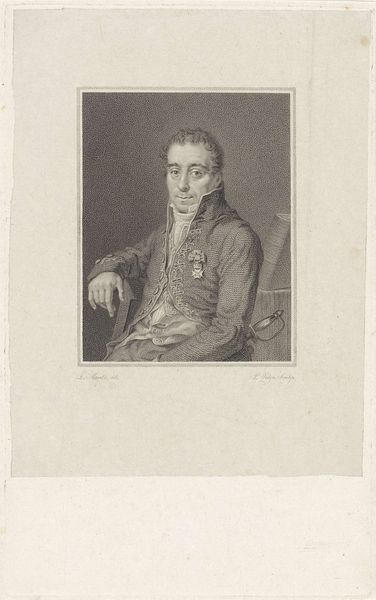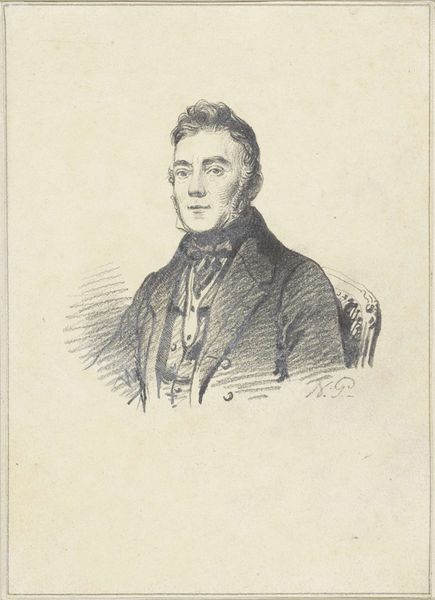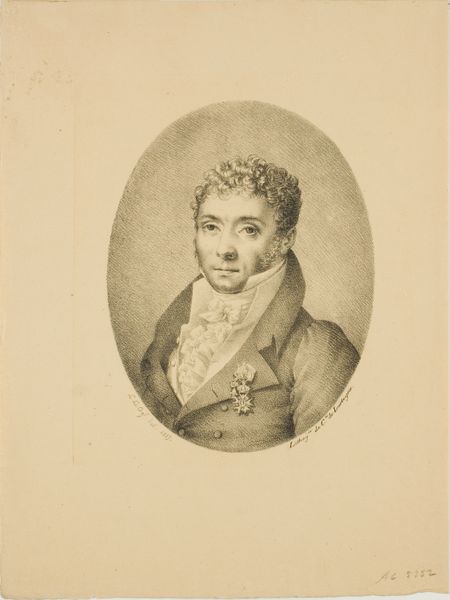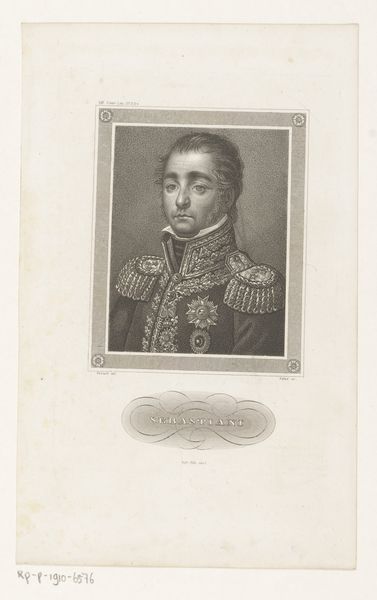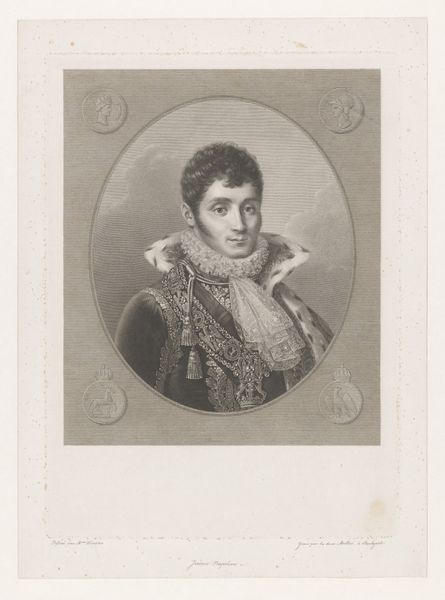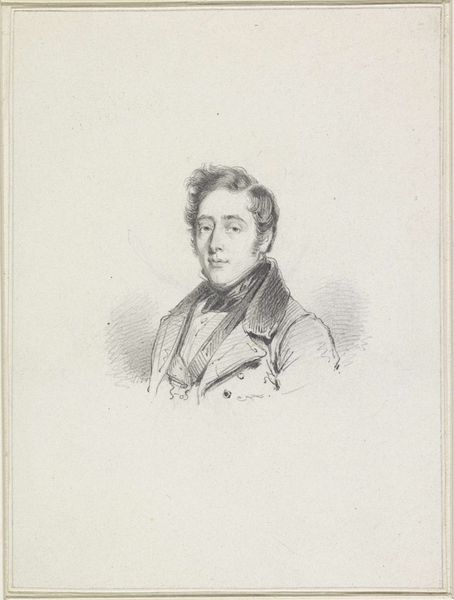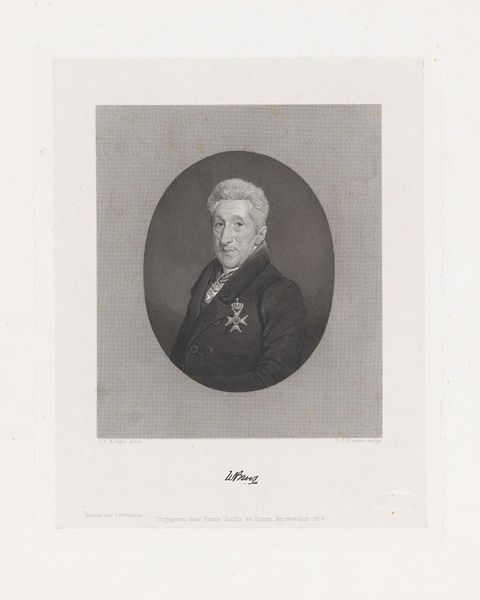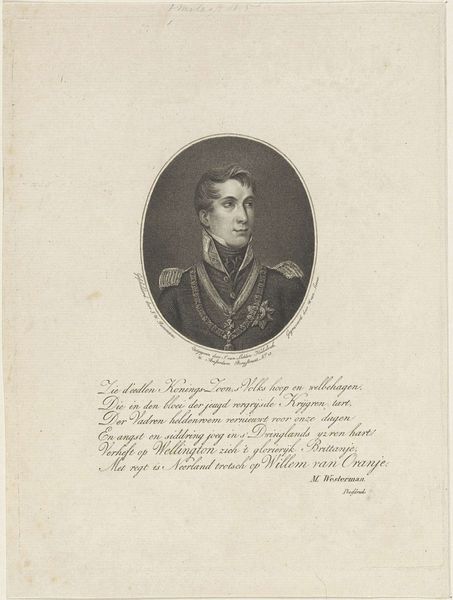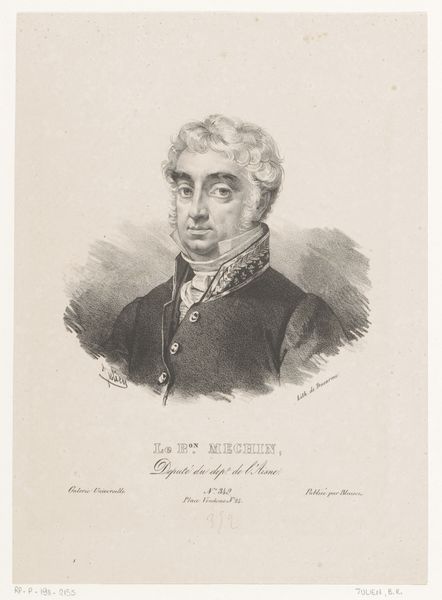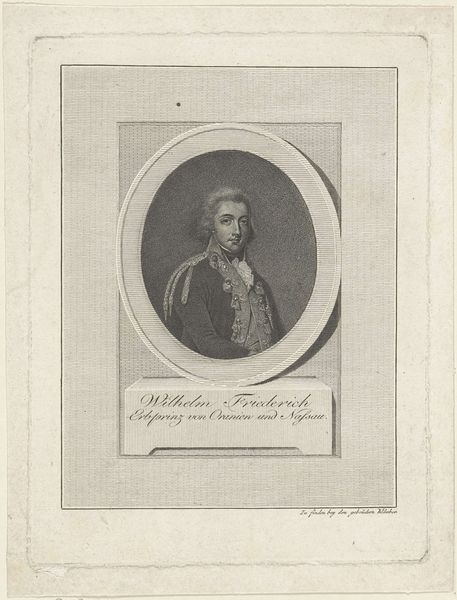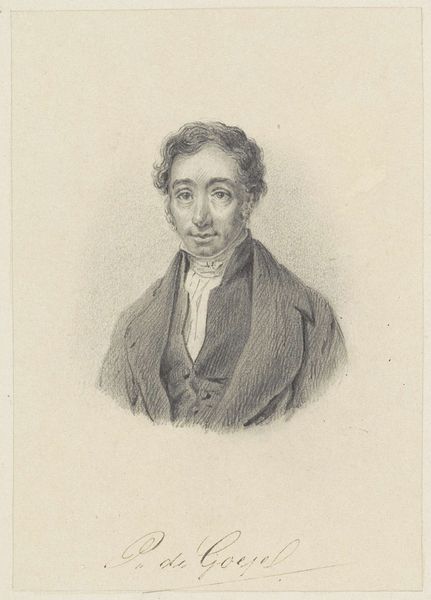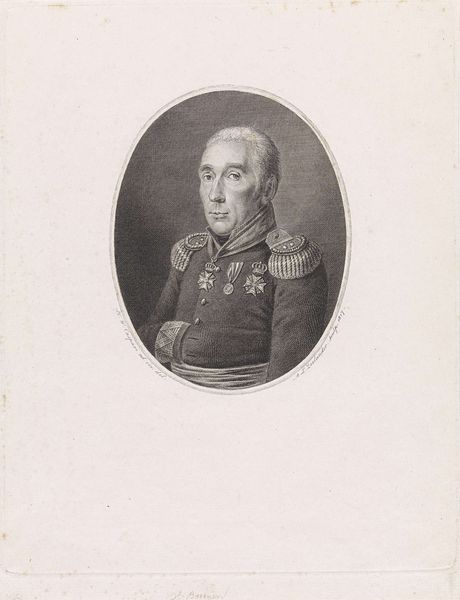
engraving
#
portrait
#
romanticism
#
genre-painting
#
engraving
Dimensions: height 245 mm, width 152 mm
Copyright: Rijks Museum: Open Domain
Editor: Here we have Philippus Velijn's engraving of Samuel Iperuszoon Wiselius from 1818, currently held in the Rijksmuseum. It's a very formal portrait; what immediately strikes me is the sitter's composed, almost stern expression. How do you interpret this work, particularly given its time period? Curator: I see in this portrait a fascinating intersection of personal identity and public image, rendered through very deliberate symbolism. Notice the detail in Wiselius's clothing. That's no simple jacket; it speaks to status, accomplishment, and belonging. What do you notice about the medal he wears? Editor: It looks like some sort of honour or order. Is its specific symbolism important here? Curator: Precisely. These types of decorations were often imbued with specific meanings, connecting the individual to a broader network of power, patronage, and national identity. Velijn is deliberately showing us Wiselius's public self, the image he wanted to project. It is no accident that there's poetry at the bottom – reinforcing cultural identity. It's a constructed image designed to convey respectability. Editor: So, we are looking at not just a person, but a representation of authority and social standing conveyed through calculated imagery. I guess I was a little quick to jump to conclusions based on just his facial expression. Curator: Indeed. Consider then, that every element serves a purpose. Even what is left out contributes. By examining these visual cues we begin to unlock a deeper understanding of the social values of that era. Editor: This has really opened my eyes to how much information can be packed into even seemingly straightforward portraits. I appreciate your insights.
Comments
No comments
Be the first to comment and join the conversation on the ultimate creative platform.
